|
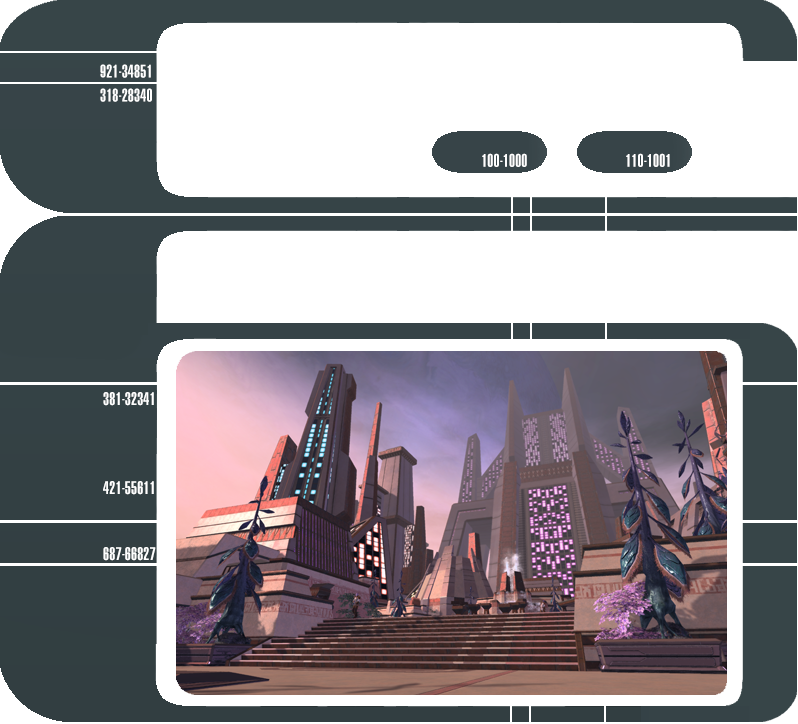
The Kobali Adventure Zone offered our art team the chance to explore a species only briefly glimpsed in Voyager, the Kobali, and use the few clues to its culture to define a complete aesthetic for their world - from technology to architecture, characters, and clothing.
I’m Brad Stokan, Art Director for Star Trek Online, and in this blog we’ll give you a glimpse into the process we used to take the never-before-seen planet of Kobali Prime from concept to reality.
Inspiration and Inference
Our goal was to create an original artistic vision for the Kobali home world to visually represent the unique culture and beliefs of this species. Our first step was to gather research, and from that data to draw inspiration and inferences. The clues we discovered in our search were minor but instructive.
We found the most unique feature of the Kobali to be their unusual and technologically-advanced method of reproduction. The Kobali can only add to their population by obtaining deceased humanoids and reanimating them by heavily altering their DNA to match that of the Kobali. Interestingly, the transformation process is not merely physical. The Kobali extensively educate the newly-reanimated over a long period prior to their introduction into society, for adaptation and acclimation to their culture and language The Kobali show reverence and respect for the deceased that are re purposed as well as for strong familial bonds with their new offspring.
From this we could infer that new life is precious to the Kobali, and so is the preservation of their culture and tradition. We could infer that the Kobali are devout and respectful of life; as it is so rare for them to receive a new member of their populace, their method of reproduction is solemnly observed and treated almost as ‘reincarnation. We imagined the long months of training and instruction given to new recruits take place in an almost monastic fashion, utilizing meditation and focused study in a quiet, humble environment.
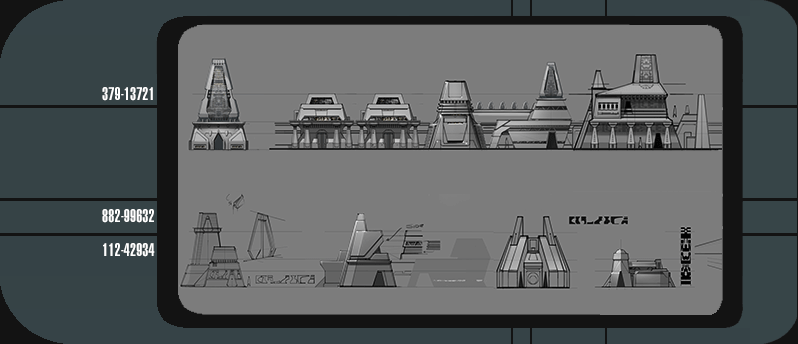
Finally, we observed that the Kobali were culturally unassuming; their clothes were not gaudy and their food was a modest gray paste. Physiologically they did not show much evidence of indulging in sensual pleasures like food or fashion.
Using these inferences, we began to build a visual language to communicate these qualities:
- Austere / ascetic
- Temple / monastic
- Reverent / Religious
- Advanced / Technology
First, we focused on the shape language of their architecture. It would imply near-religious reverence for both death and life; for this we took inspiration from designs of temples and monasteries. Finally, simple script depicted in unique glyphs would remind the Kobali of their traditions, the preciousness of life, and the value of family.
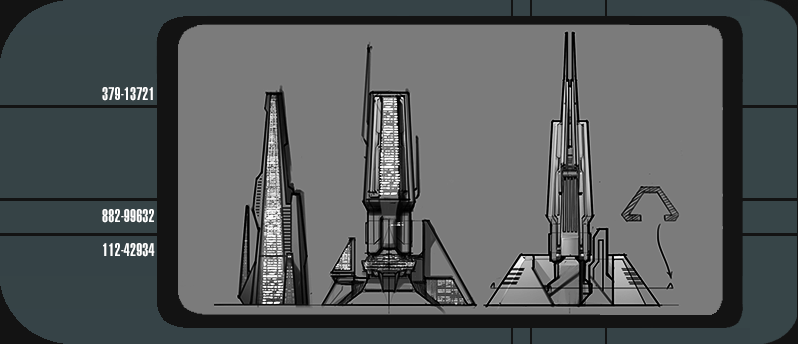
Also, the simple and austere shapes should reveal in their details a high-technology society. Thus, hints of advanced technology were applied sparingly to our building designs. We also drew inspiration from Kobali ships which incorporate a broad base with tall triangular or trapezoidal shapes.
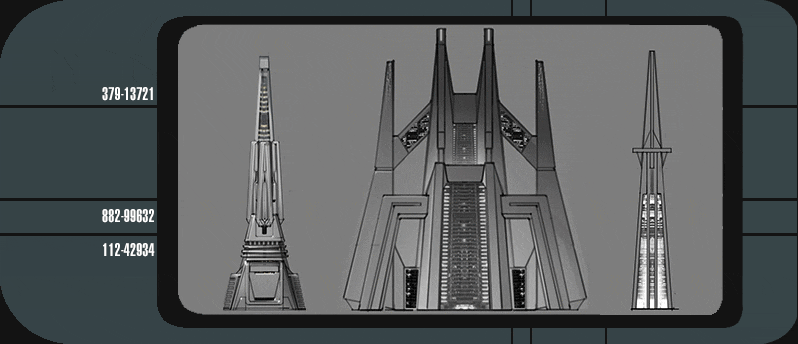
We decided the Kobali city would radiate outward from the central, most important building - both a temple of sorts and the location of their genetic reincarnation technology. This informed our eventual map layout.
Finally, we explored materials, colors, props and the level of technological integration in a color concept.
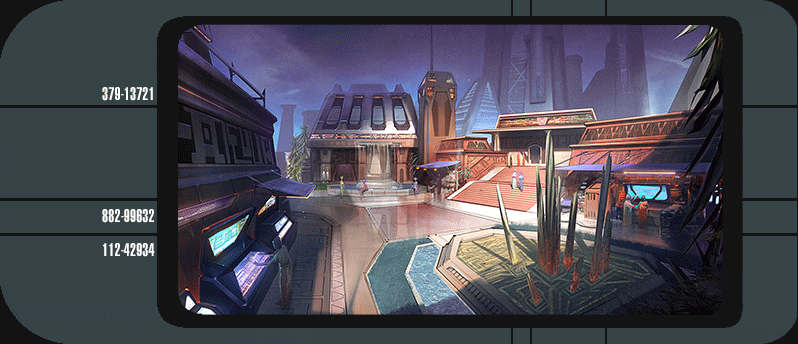
Kobali Costumes
From our research, traditional Kobali civilian clothing seemed rather plain and unassuming - not unlike the gray paste the Kobali consume as their typical food. Coupled with our inference that chief among the Kobali values were reverence and respect, we designed their civilian clothing accordingly.
We imagined the rare Kobali ‘soldier’ might appear to our eyes as something akin to a warrior monk. Their martial tradition might grow naturally from the meditation forms and physical and mental disciplines intrinsic to the acclimation of newly ‘resurrected’ members into Kobali society.
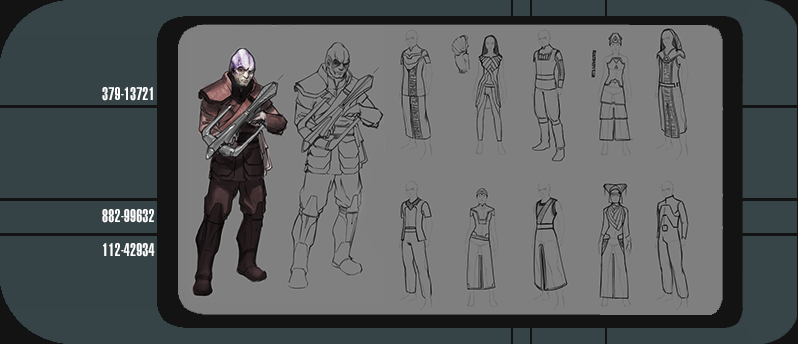
We decided their armor embellishments would appear not unlike traditional lamellar plates worn over clothing – creating an almost ceremonial look. We imagined Kobali warriors would favor strike-hard-and-withdraw tactics over pitched battle. Thus, their appearance and equipment should imply mobility and ruling out bulkier or heavier armor. We theorized the Kobali would instead employ force field technology for their protection.
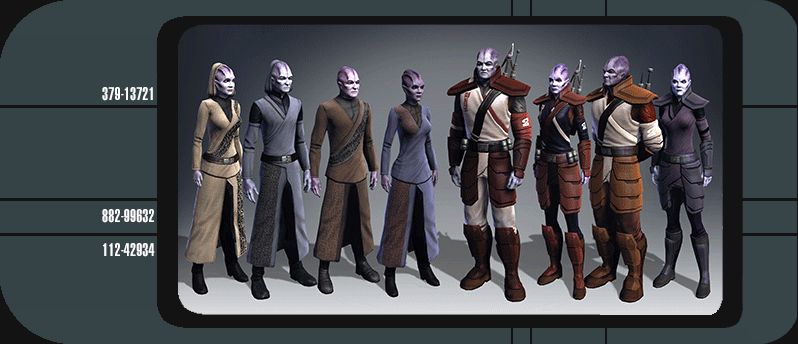
The Invaders
Meanwhile, a powerful invading species, the Vaadwaur, have begun a planetary invasion on Kobali Prime. For reasons not yet known, they have foregone an orbital bombardment of the Kobali city – instead digging in with trenches, turrets and bunkers to mount a furious frontal assault.
We chose for the Vaadwaur a blunt and brutal style to communicate their blitzkrieg way of war. We implied their impending threat with an extensive network of fortifications topped off by the domineering presence of a landed Vaadwaur frigate atop the cliffs serving as their command post.
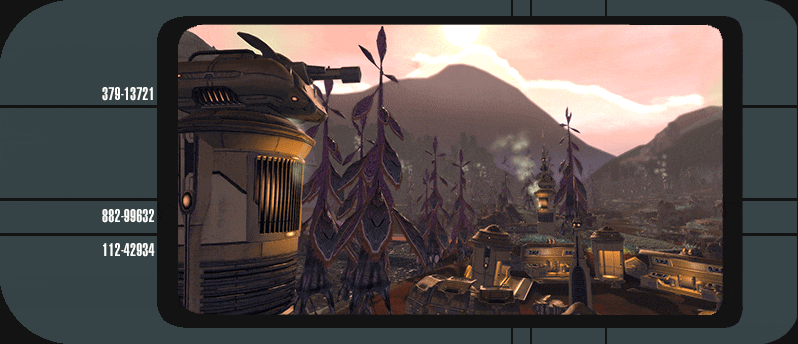
With the story behind both the Kobali and Vaadwaur designs in mind, let’s take a closer look at how we brought the ideas and concepts into reality!
Bringing the Adventure Zone to Life
Hello Captains! Jeff “LCDRMiller” Miller here, giving you a short breakdown on the construction of the Kobali Adventure zone.
The first thing to note is that the entire environment team had some sort of hand in creating the art for this zone. A normal Featured Episode or Special Task Force usually has one main environment artist and sometimes a second will jump on after the mission or STF is complete and to do final polish tasks and get that mission to the last 10 percent of greatness. This zone worked a bit differently this time around, based on goals we all wanted to achieve, prop density, high quality art and map size.
White Box Stage
Working with our designer in the very early design stages, we made a list of all the possible props the entire map would need, ranging from Kobali city props to Kobali and Vaadwaur battlefront props, as well as all planetary props such as bushes, trees, grass and rocks. As you can imagine, this list grew rapidly. Once this list was complete, I still had some time before the rest of the art team got on board to help out. I took that list into a whitebox stage. (Whitebox: very basic, un-textured props that are usually just white boxes in the size and footprints of the final versions)
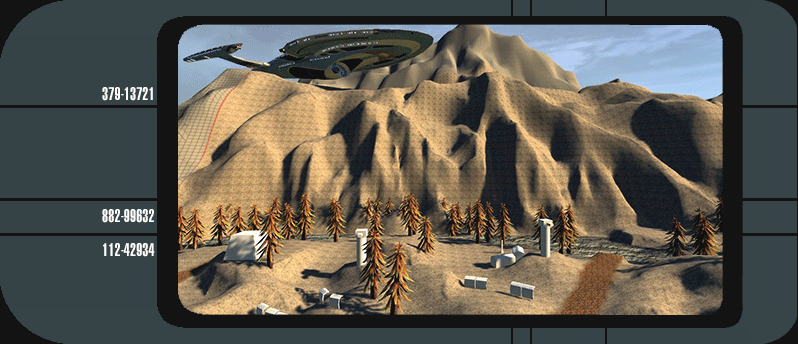
During this whitebox stage my tasks consisted of terrain painting, very early whitebox and art placement, all while working with a designer to make sure we had the right areas for missions and combat. Once the rest of the environment team got on board, the map really started to take shape.
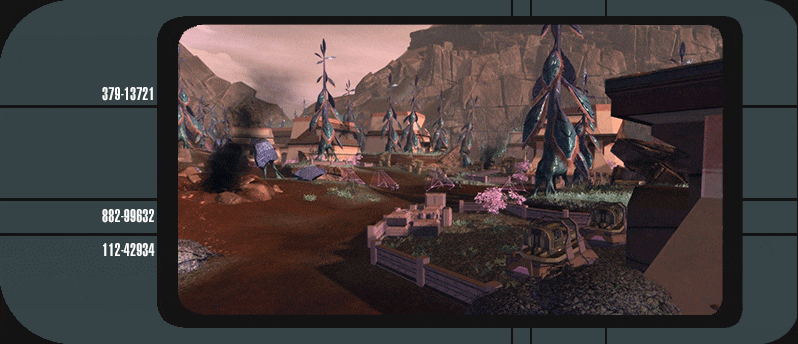
Visual Map Progression
One of the big things we wanted to make sure was implemented was a progression of visual change as players played through the story. This meant making different zones within the map that felt totally different from one another. From early on we knew we wanted 4 main areas: Kobali City Hub, Trenches, Mountainside and the Summit. We hit that list perfectly, and even added a few more while the map was being created. Outskirts and a forest area were added naturally as the map evolved. The outskirts are the first area just outside the city gate. I thought the idea of fighting between buildings and using these structures as cover, just as so many battles were fought in our own real life history such as World War 2, was something that added a different feel then running around in the trenches. The forest just felt right. It was the untouched area of the map. A glimpse of what the planet was like before the massive Vaadwaur advance on the Kobali. It’s a perfect transition from the trenches up into the hills area.
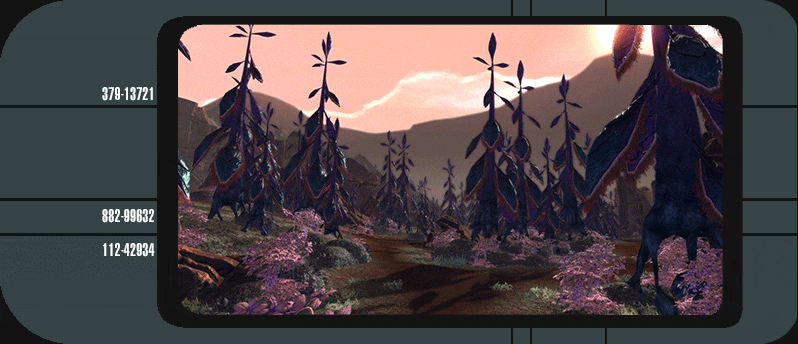
When everything is said and done, the art team did some amazing things with this zone. I’m very proud of what we were able to accomplish and am looking forward to the next one! I hope you will be too!
See you in game!
Miller signing off.
Discuss in the forums
|












